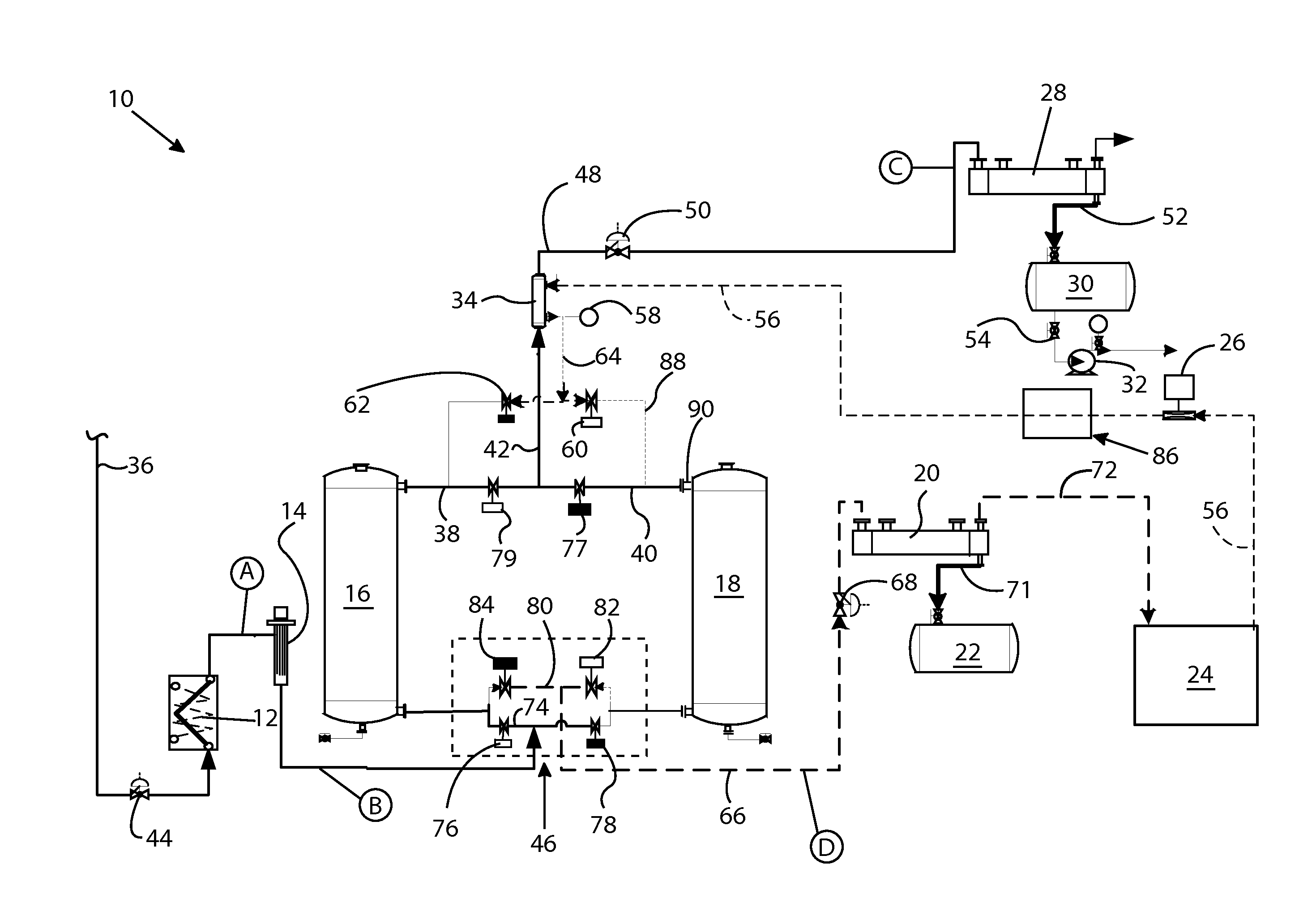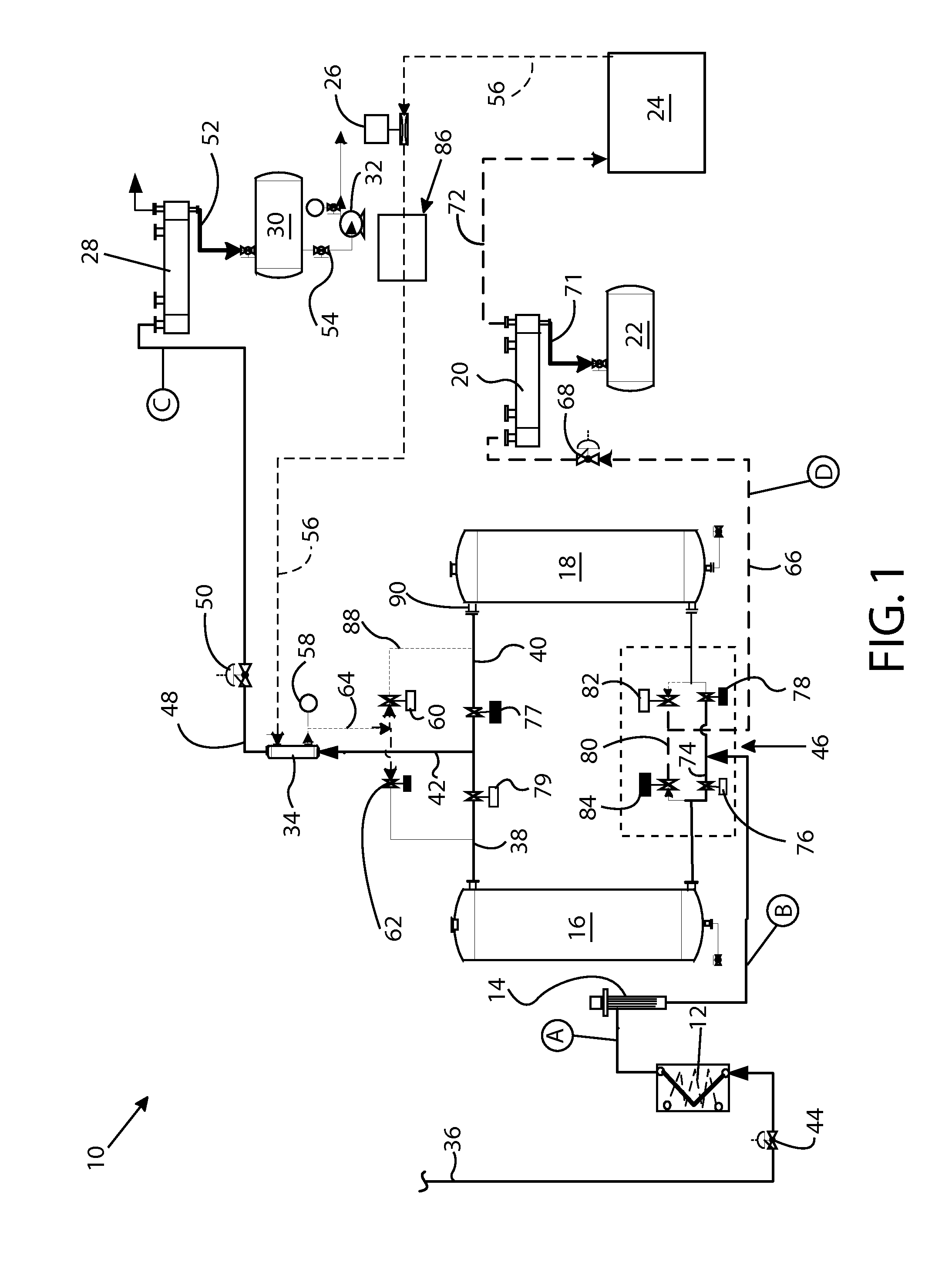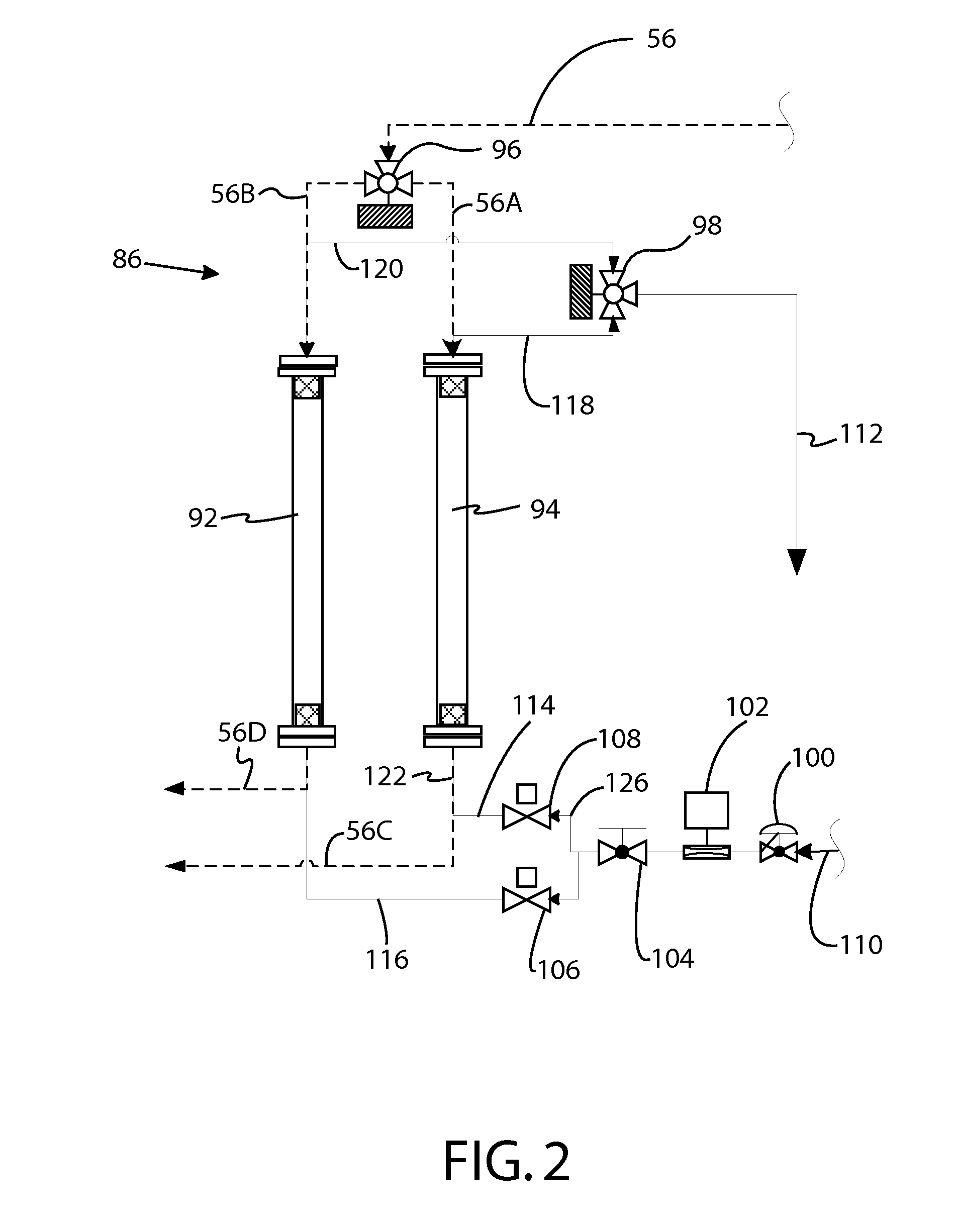Pressure and vacuum swing adsorption separation processes
a vacuum swing and adsorption separation technology, applied in the field of molecular sieves, can solve the problems of reprocessing energy-intensive and unrecognizable references in the references of the problem of regenerating the adsorbent molecular sieve, and achieve the effect of energy saving
- Summary
- Abstract
- Description
- Claims
- Application Information
AI Technical Summary
Benefits of technology
Problems solved by technology
Method used
Image
Examples
##ic example 1
Prophetic Example 1
[0079]A feedstock of 3870 pounds per hour of isopropyl alcohol with 120 pounds of water per hour will be introduced via line 36. At location A, the feedstock is expected to be all vapor at 63 psia and 255° F. After passing through superheater 14, the properties of the feedstock at location B are expected to be all vapor at 62 psia 305° F., which is a flow rate of 148 Actual Cubic Feet per Minute (ACFM). This feedstock will then be fed alternatingly through first and second primary molecular sieve units 16, 18 with the duration of feedstock passage through the operative one of molecular sieve units 16, 18 being 5 minutes. The feedstock exiting the operative one of first and second primary molecular sieve units 16, 18, after passing through gas-to-gas heat exchanger 34 and arriving at location C is expected to exhibit the following properties: 15 psia, 175° F. with approx 80% still vapor, but devoid of water. It is expected that after passing through condenser 28 an...
##ic example 2
Prophetic Example 2
[0082]A feedstock of 3826 pounds per hour of ethanol with 161 pounds per hour of water will be introduced via line 36. At location A, the feedstock is expected to be all vapor at 63 psia and 250° F. After passing through superheater 14, the feedstock at location B is expected to be all vapor at 62 psia, 300° F., which is a flow rate of 192 Actual Cubic Feet per Minute (ACFM). The feedstock will then be fed alternatingly through first and second primary molecular sieve units 16, 18 with the duration of feedstock passage through the operative one of molecular sieve units 16, 18 being five minutes. The feedstock exiting the operative one of first and second primary molecular sieve units 16, 18, after passing through gas-to-gas heat exchanger 34 and arriving at location C will be expected to exhibit the following properties: 15 psia, 175° F. with approx 80% remaining as vapor, but devoid of water. It is expected that after passing through condenser 28 and through unit...
##ic example 3
Prophetic Example 3
[0085]A feedstock of 3845 pounds per hour of methanol with 202 pounds per hour of water will be introduced via line 36. At location A, the feedstock is expected to be all vapor at 63 psia and 225° F. After passing through superheater 14, the feedstock at location B is expected to be all vapor at 62 psia, 275° F., which is a flow rate of 266 Actual Cubic Feet per Minute (ACFM). The feedstock will then be fed alternatingly through first and second primary molecular sieve units 16, 18 with the duration of feedstock passage through the operative one of molecular sieve units 16, 18 being five minutes. The feedstock exiting the operative one of first and second primary molecular sieve units 16, 18, after passing through gas-to-gas heat exchanger 34 and arriving at location C, is expected to be at 15 psia, 150° F., approximately 80% still vapor, but devoid of water. It is expected that after passing through condenser 28 and through unit 32, 99.5% dry methanol will result...
PUM
| Property | Measurement | Unit |
|---|---|---|
| Pressure | aaaaa | aaaaa |
| Flow rate | aaaaa | aaaaa |
Abstract
Description
Claims
Application Information
 Login to View More
Login to View More - R&D
- Intellectual Property
- Life Sciences
- Materials
- Tech Scout
- Unparalleled Data Quality
- Higher Quality Content
- 60% Fewer Hallucinations
Browse by: Latest US Patents, China's latest patents, Technical Efficacy Thesaurus, Application Domain, Technology Topic, Popular Technical Reports.
© 2025 PatSnap. All rights reserved.Legal|Privacy policy|Modern Slavery Act Transparency Statement|Sitemap|About US| Contact US: help@patsnap.com



